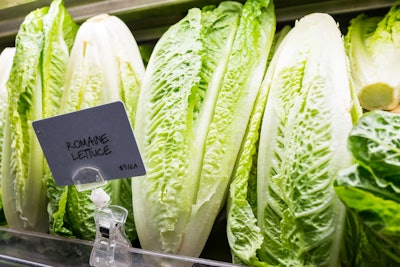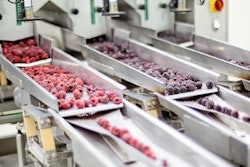
Food safety culture is one of the hottest topics currently in the food industry, and for good reason. Having a culture of food safety is fundamental to any food safety system. As a foundational building block by which all other programs are formed, this concept must be woven across the food supply chain from farmer to consumer.
As with many in the food industry, you may be asking yourself, “What is food safety culture, and why is it important?” Although there are many definitions, food safety culture refers to the specific culture of a food organization, be it a farm, processor, distributor, manufacturer, restaurant or retail location and its attitudes, beliefs, practices and values related to food safety. In short, these norms direct the members of the organization in their daily roles and responsibilities. In practice, food safety culture can be defined as “what employees and stakeholders do when nobody else is looking.” While this is undoubtedly true, it goes far beyond that to include all aspects of leadership commitments, facility and organizational design, behavior, rewards and employee empowerment.
Building a healthy food safety culture
Currently, all food organizations have some sort of culture similar to “it’s the way things are done” within the company, but how do you gauge the quality of your food safety culture? You may want to ask yourself and others how they answer a series of questions, such as:
- Do employees actively report food safety risks or concerns?
- If an accident occurs within the production, will the employee be fired if they report it?
- What are a few of your most recent non-conformances or incidents, and how did these occur?
- Were they caused by an employees’ actions that could have been prevented through proper or improved training processes, or was it unavoidable and the employee reported as soon as it was identified?
Consider your answers to these questions to understand where to begin; from there, you can focus on strategies for improvement.
Food safety culture within companies has been shown as a critical aspect of organizational success or failure. When we think about food safety culture, we are drawn to consider how companies make decisions and investments. For instance, does leadership genuinely see the value in programs, or is the food safety and quality assurance department considered a “cost center?” When things get tough, are quality control and testing programs the first to get cut, or are these seen as essential for business? Some companies might be willing to cut corners or take risks to meet financial objectives or deliver on commitments. In contrast, others have seen the benefit of slowing down and potentially missing a deadline to ensure food safety standards are met.
Leadership plays a critical role in the development and execution of attaining a desired food safety culture. It is the responsibility of the leadership to craft, execute, invest and model the required behavior for employees. Organizations often find that when leadership at all levels, from the chief executive to the line lead, takes an active approach at modeling the new behaviors for their employees, they can quickly move their culture from their current state to the preferred outcome. Conversely, when a single employee leads the organization’s food safety culture, team, or group and is unable to gain leadership buy-in, change becomes impossible to achieve.
The role of technology in food safety culture
How does technology play a role in an organization’s food safety culture? In many ways, commitment to technology implementation and adoption demonstrates that growth and improvement are essential to a company. For example, during the Coronavirus disease (COVID-19) pandemic, significant investments were made to adopt and employ non-traditional retail models, such as direct-to-consumer and alternative delivery. Out of necessity, organizations needed to find alternate business models to continue to operate during this turbulent time. In the same way, food safety professionals must continue to discover and adapt to the most current industry advances, including employing and upgrading technology to help solve previously impossible challenges.
In many cases, organizations haven’t recently invested in technological solutions to improve their food safety culture. For instance, the utilization of paper forms and documentation is still prevalent in the food industry. This lack of leveraging technological tools leads to the duplication of effort, the inability to gain actionable insight, and the increased likelihood of documentation errors and avoidable risk. On the other hand, organizations that have invested in technology have found that their teams can automate laborious and manual tasks, reduce risk, increase insights into macro-trends, and prevent issues—not just react to them. Technology that provides actionable insights such as these will be necessary as we prepare for a food supply chain of the future.
Food safety culture and the cold supply chain
Have you considered what food safety culture means for your cold supply chain? As we enter the Food and Drug Administration’s New Era of Smarter Food Safety, both technology adoption and food safety culture have been identified as critical focus areas to reduce the burden of foodborne illness on our society. Along with the two other core elements, it’s safe to assume that there is significant overlap between the various focus areas of the New Era. All members of the industry play essential roles in assuring food safety, and as the manager of your supply chain from a food safety culture perspective, your role is critical. How do you develop the culture you desire with so many, often disparate, organizations and teams? One way to start is to develop communication channels, programs, and processes that promote collaboration and information sharing. In addition, organizations often gain significant buy-in from their supply chain partners by providing them previously unavailable insights or helping solve challenges they are experiencing.
The ultimate role of technology is to make the users’ lives easier. The cold supply chain is a black box for many food safety professionals. Most know that trucks are loaded with perishable shipments, and then the product shows up at the final destination. The unknown variable in this scenario is what happened between Point A and Point B? Were foods kept safe and in the necessary quality condition, or did they experience temperature abuse? Having real-time supply chain visibility allows teams, including food safety, quality assurance and logistics to take an active-management preventive controls approach to cold chain management.
Real-time, Internet of Things (IoT)-enabled and cloud-based technologies provide users access to the insights of live data from shipments, including time, temperature, geo-location, light and pressure sensing, as well as historic shipments. This technology provides confidence that the cold chain has been controlled and gives organizations value-rich data to prevent quality issues from happening. Investing in technological solutions can help you achieve the food safety culture your company desires and your customers demand.


















